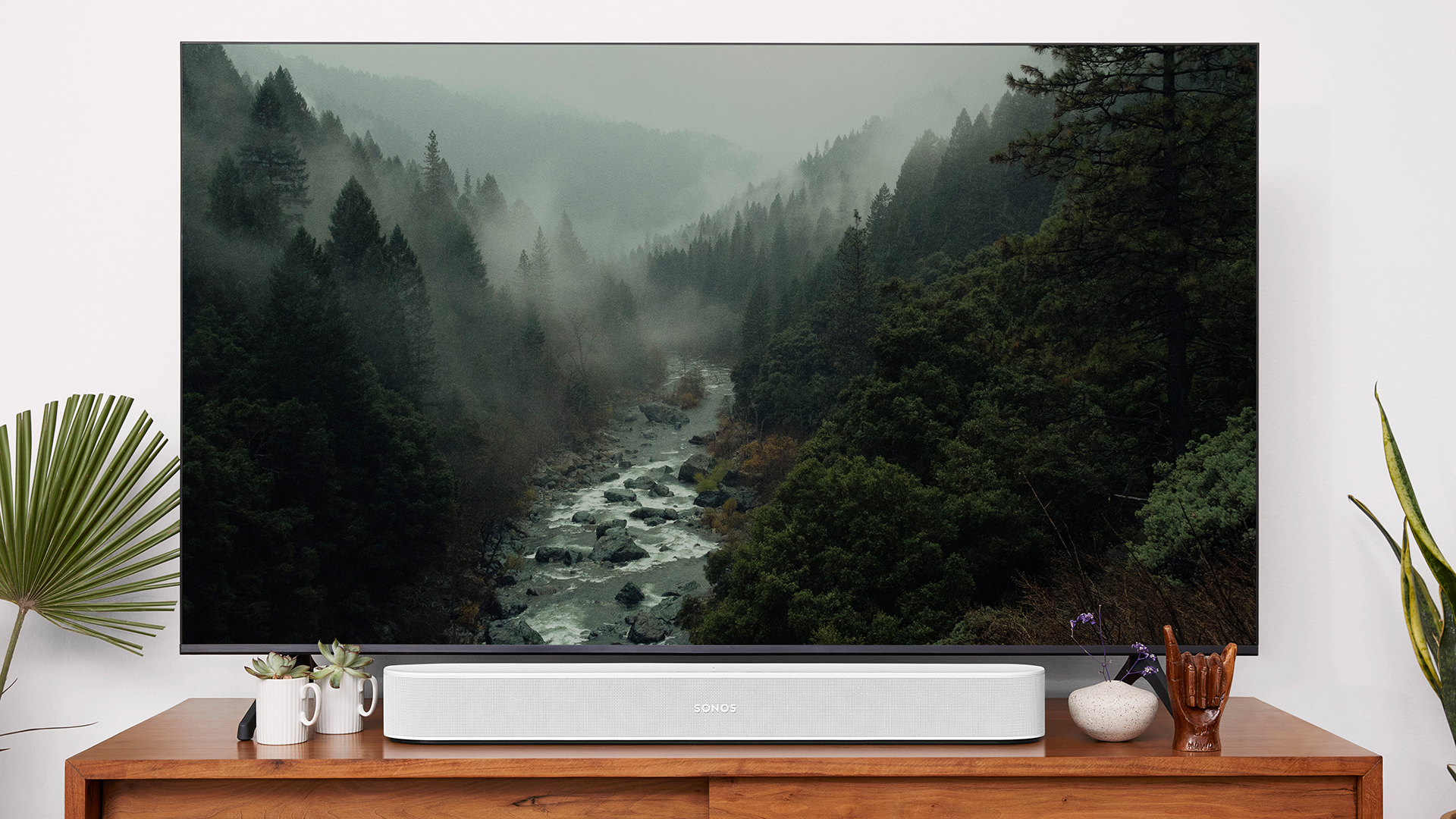

The Sonos Beam 2 has now been unveiled, and it's a very tempting upgrade to what was already one of the best soundbars. Often, flashy features such as Dolby Atmos 3D audio and eARC high-quality connections are what you get from large and expensive models – but the new Sonos Beam brings these features at a size suitable for compact 32-inch TVs, and it pretty much unique in doing so.
I had the chance to chat with Jeff Derderian, Sonos' Vice President of Product Programs, about the updated Beam, and what's similar, what's changed, and why my biggest gripe with Sonos soundbars is still there, and doesn't look likely to change soon.
This new form of the Beam is arriving now partly for technological reasons, and partly because home viewing has shifted. In the case of the latter, Derderian specifically mentioned the popularity of straight-to-streaming movie premieres as something they wanted to capitalise on, bringing more cinematic sound in a compact space with the spatial sound of the new Beam.
In the case of the technology, the Sonos Arc is really what enabled this version of the Sonos beam to be created. That soundbar is packed with drivers, requiring complex calculations to create its excellent virtual surround effect, and so Sonos was able to use this tech to power up what the Beam could do.
"We've taken a lot of the platform enhancements from a computing hardware perspective as well as from a software perspective," says Derderian, "because the software is what makes any of these objects really come to life."
But Sonos wasn't interested in just cutting sections out of the Arc to make a smaller Dolby Atmos soundbar – it specifically wanted to make it happen in the Beam's body.
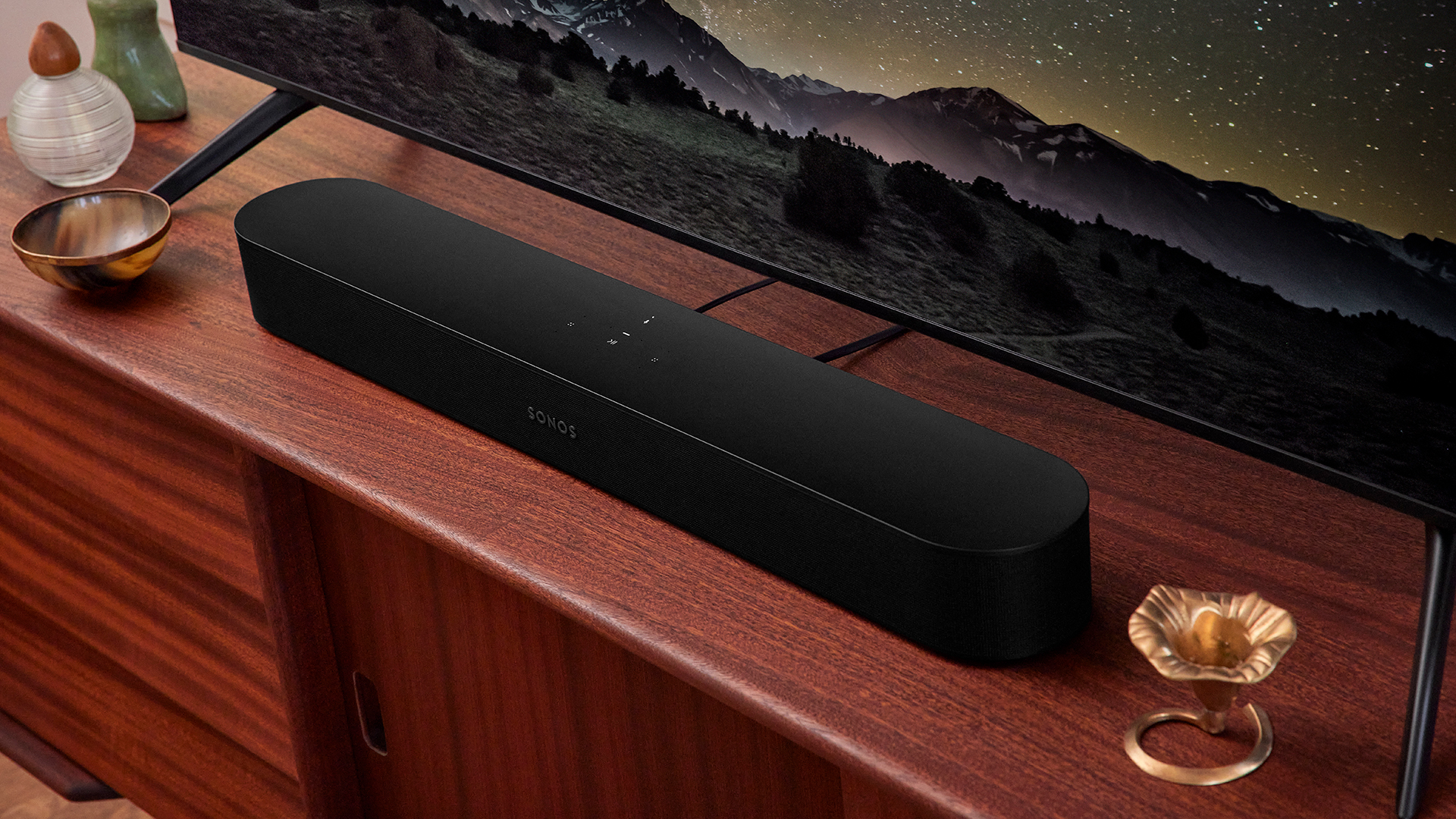
"We did a lot of research to land on this form," explains Derderian. "At the time of the launch, we had PlayBar, which was a bit larger, and at the time we really tried to make sure that this product would fit in the spaces that PlayBar couldn't.… and figuring out just the right size to fit exactly that environment.
Sign up to the T3 newsletter for smarter living straight to your inbox
Get all the latest news, reviews, deals and buying guides on gorgeous tech, home and active products from the T3 experts
"So when we looked at Beam Gen 2, the same story held true – people still wanted to have that option for a little bit smaller, more compact size, but still great sound."
The challenge was that the Beam has a solid top plate, so upfiring speakers weren't an option while keeping the same design – so Sonos worked on using its existing driver setup in a smarter way. "It was a challenge to the team: Can you deliver that experience without adding those dedicated heights?" Derderian says.
"That's where all of the enhancements that we put into Arc, and into an upgraded computing platform, allowed us to have more horsepower, and therefore add two more arrays above and beyond what we could do on Beam Gen 1," he continued.
Where the original Beam had five drivers working in a three-channel configuration, in the second-gen version they work to spread the sound in five different ways.
"Five arrays allows us to steer sound around your room, and they'll work in concert with one another. And two of those are dedicated arrays for the rear channels as well as for the height component, and that's what allows us to get this Dolby Atmos sound and 3D audio in this product that's still compact. It's all that computing processing," Derderian explains.
This rethinking of the acoustic output had benefits beyond just adding more width and height to the mix.
"In doing that, we were able to actually completely redesign the centre channel," says Dederian. "When we think about home theatre content, we think about three components that are most important: First is the centre-channel clarity. We're really focused on making sure we can render the audio of someone's voice as natural and clear-sounding as possible, because that is one of the biggest complaints people have about TV sound.
"Second is the spaciousness that develops around you, and this is where those additional two arrays come into play. The rears really give you the surround sound from those arrays, and the new dimension is the height component, which comes when we receive a Dolby Atmos signal. Third is depth. We need deep impactful bass in order to be a credible home theatre product, and fitting that into a small form factor is a challenge."
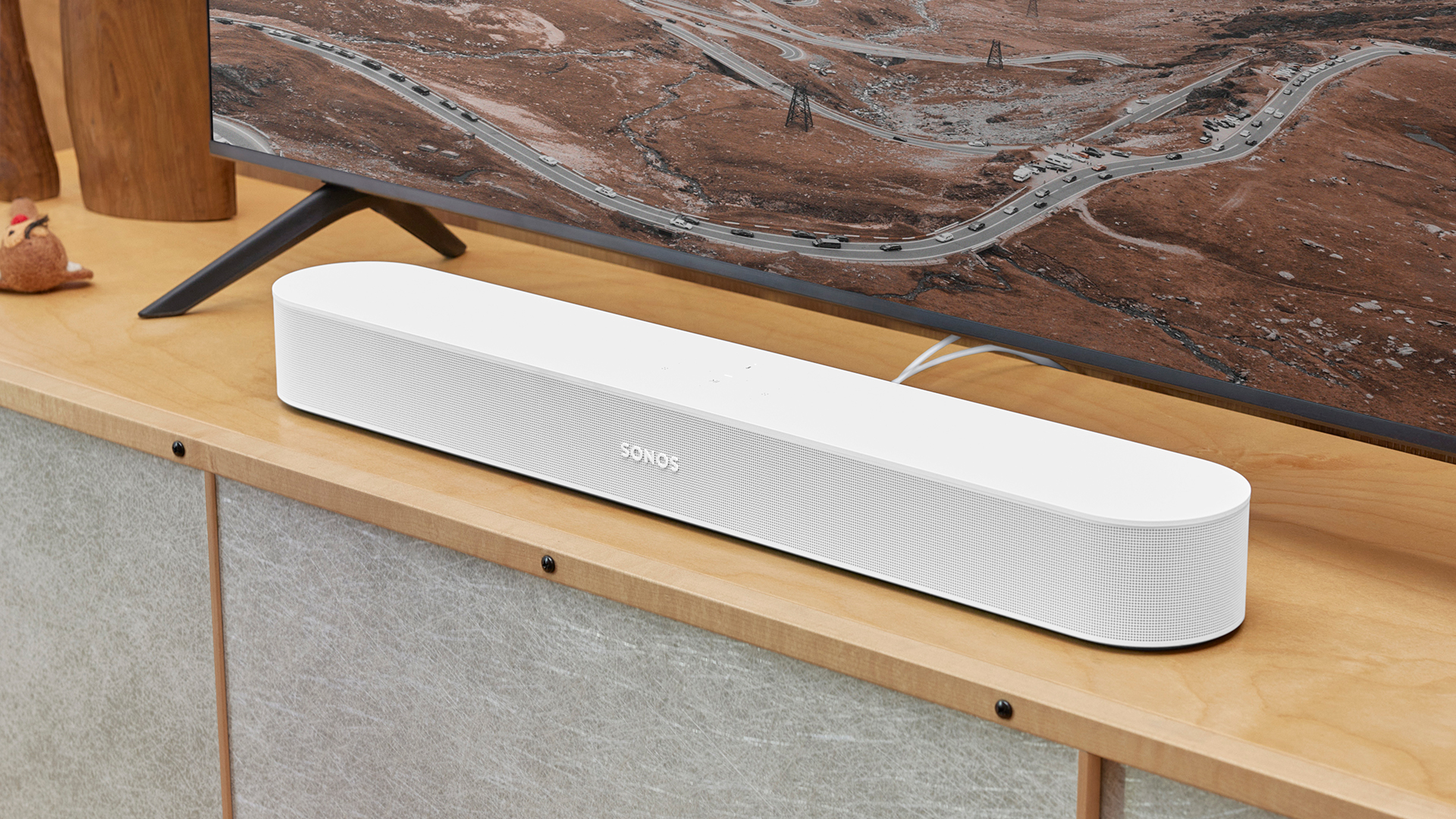
HDM-why?
Having talked through the reasons for the design and technology approach to the sound, I wanted to talk about my biggest frustration with Sonos Arc: that it only had a single HDMI port. Most mid-range or higher soundbars these days will include two HDMI ports – one to connect to the TV, and then the other is an input for a video device, and the soundbar will pass that video through to the TV.
The purpose of an HDMI passthrough is twofold: first, it means that you don't lose the use of a whole HDMI port just to connect your soundbar. And second, if your TV doesn't support Dolby Atmos, you could connect a streaming stick that does support it directly into the soundbar, where the Dolby Atmos audio would be picked up, bypassing the limits of the TV altogether.
The new Sonos Beam 2nd Gen doesn't include a second HDMI port, and I asked why.
"We debated this heavily all the way back to the original Beam days, when we first introduced HDMI on the product," says Derderian. "Really it comes down to: we're always striving for simplicity and making the setup experience as simple as possible for our users, because we know that's the number one barrier for entry for folks. How easy is this going to be to set up?
"Sometimes it a tradeoff, and in this case it's a tradeoff between connectivity options and simplicity… If you've got one device plugged into that product, now you've got one device that maybe operates a little bit differently to everything else … Typically when you have a passthrough, you can use that to get higher-res audio, but we can get that now with eARC, so looking to the future we know that HDMI 2.1 and eARC are the standard that TV manufacturers are moving over to. In this industry, it takes time, but we always look to the future and plan for that."
As Derderian says: "It can be a contentious decision, but we stand by it."
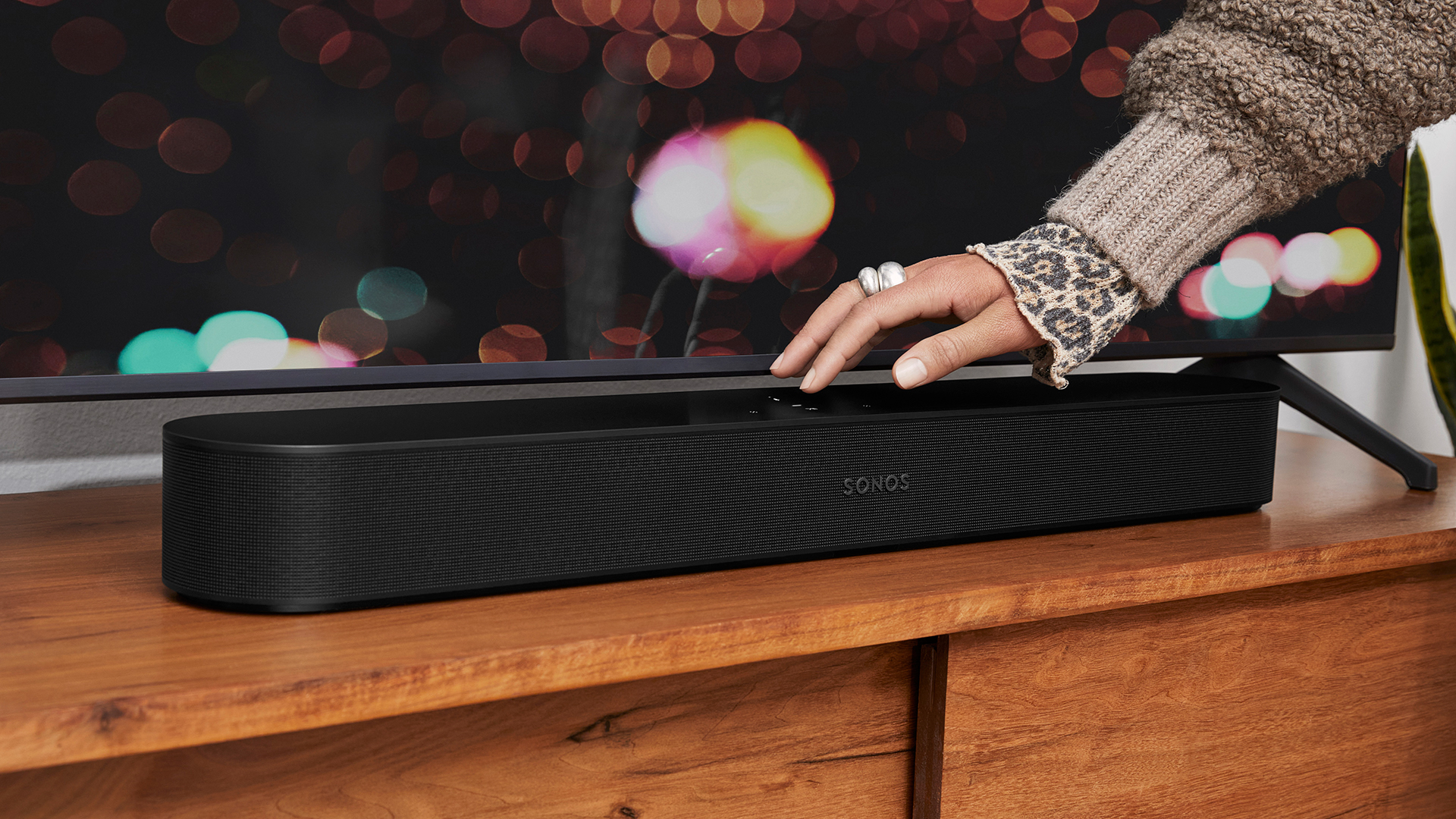
Now, I'm not totally satisfied by this answer – the problem I have with soundbars not having passthrough isn't to do with the simplicity of the soundbar itself, but what it means for connecting to the TV. Lots of the best TVs under £500 have just two HDMI ports, so I totally lose the use of one of them for video if I connect a Sonos Beam.
Similarly, there are lots of TVs in use today where the HDMI ARC or HDMI eARC port is one of a limited number of 4K HDMI ports, or the only HDMI 2.1 port – basically, the special port that you want to use for your best equipment.
So if you have one of these TVs and you want to connect a Sonos Beam, you have juggling to do, to work out which HDMI cable should be connected where for the optimal experience. Or you have to decide simply not to connect one of your devices – or to swap cables when you want to switch between your console and your set-top box or similar.
This isn't some weird hypothetical issue either – I'm T3's TV guy, and I have a still-great Sony 4K TV in my bedroom that has only two 4K HDMI ports, both in use, and one of them is the HDMI ARC port. The new Beam should be the perfect upgrade for this TV, but I'd have choose one of my devices to no longer connect in 4K if I added it.
Not having a passthrough might mean more simplicity for the Sonos Beam setup process, but if you don't have the right kind of TV it doesn't remove that complexity, it just pushes it back onto you to sort out.
Anyway, HDMI issues aside, we can't wait to see how the new sound processing improves what was already a real powerhouse of a tiny soundbar. The Sonos Beam 2nd Gen will be available from October 5th for £449/$449/AU$699.
Matt is T3's former AV and Smart Home Editor (UK), master of all things audiovisual, overseeing our TV, speakers and headphones coverage. He also covered smart home products and large appliances, as well as our toys and games articles. He's can explain both what Dolby Vision IQ is and why the Lego you're building doesn't fit together the way the instructions say, so is truly invaluable. Matt has worked for tech publications for over 10 years, in print and online, including running T3's print magazine and launching its most recent redesign. He's also contributed to a huge number of tech and gaming titles over the years. Say hello if you see him roaming the halls at CES, IFA or Toy Fair. Matt now works for our sister title TechRadar.
-
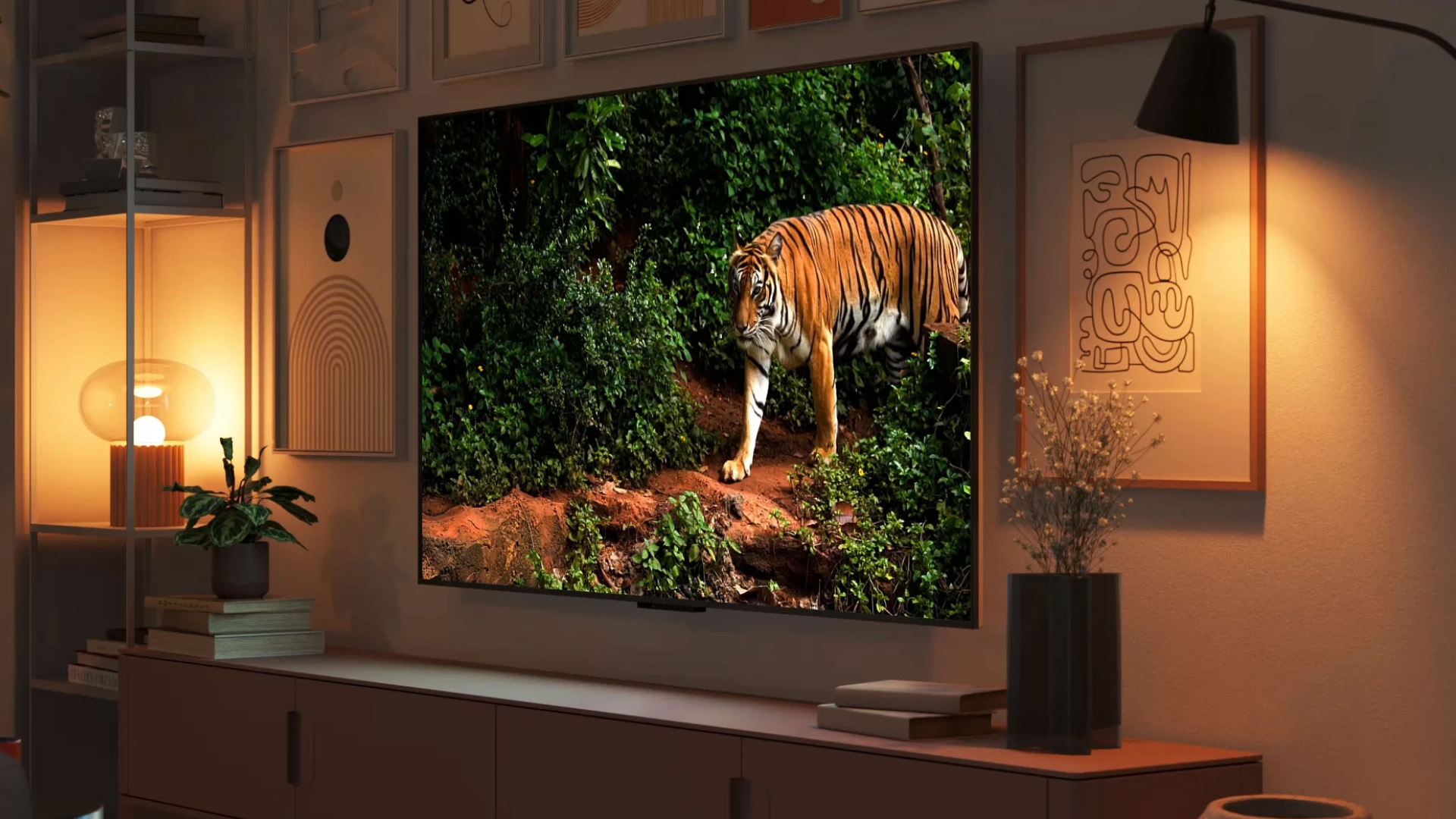 Amazon Fire TV Omni Mini-LED 4K TV review: a huge step up in performance
Amazon Fire TV Omni Mini-LED 4K TV review: a huge step up in performanceAmazon's second-gen Fire TV and first Mini-LED TV is a great option
By Steve May
-
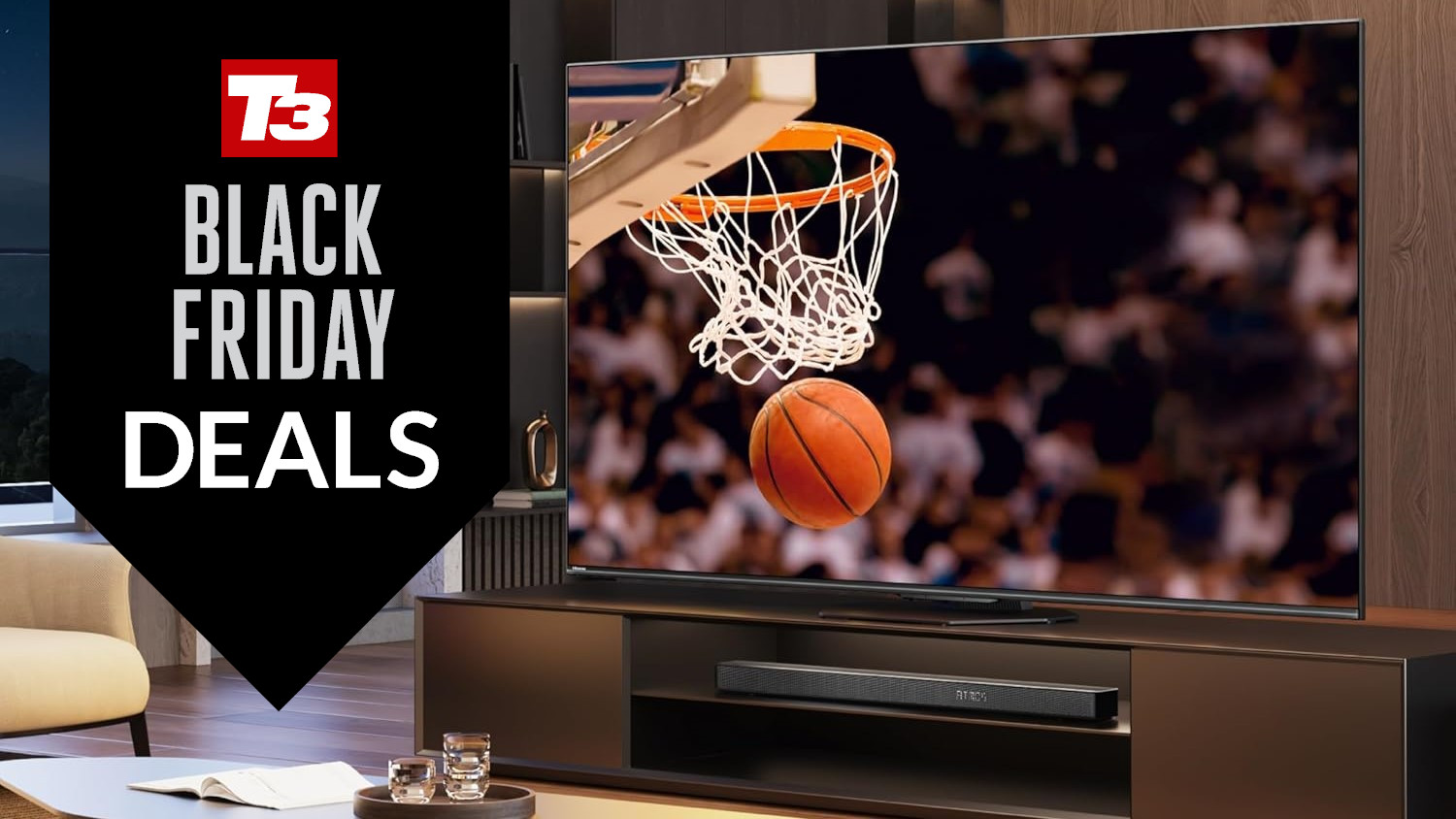 Early Black Friday deal sees price of massive 75-inch TV slashed
Early Black Friday deal sees price of massive 75-inch TV slashedYou'll even get a free copy of NBA 2k25
By Sam Cross
-
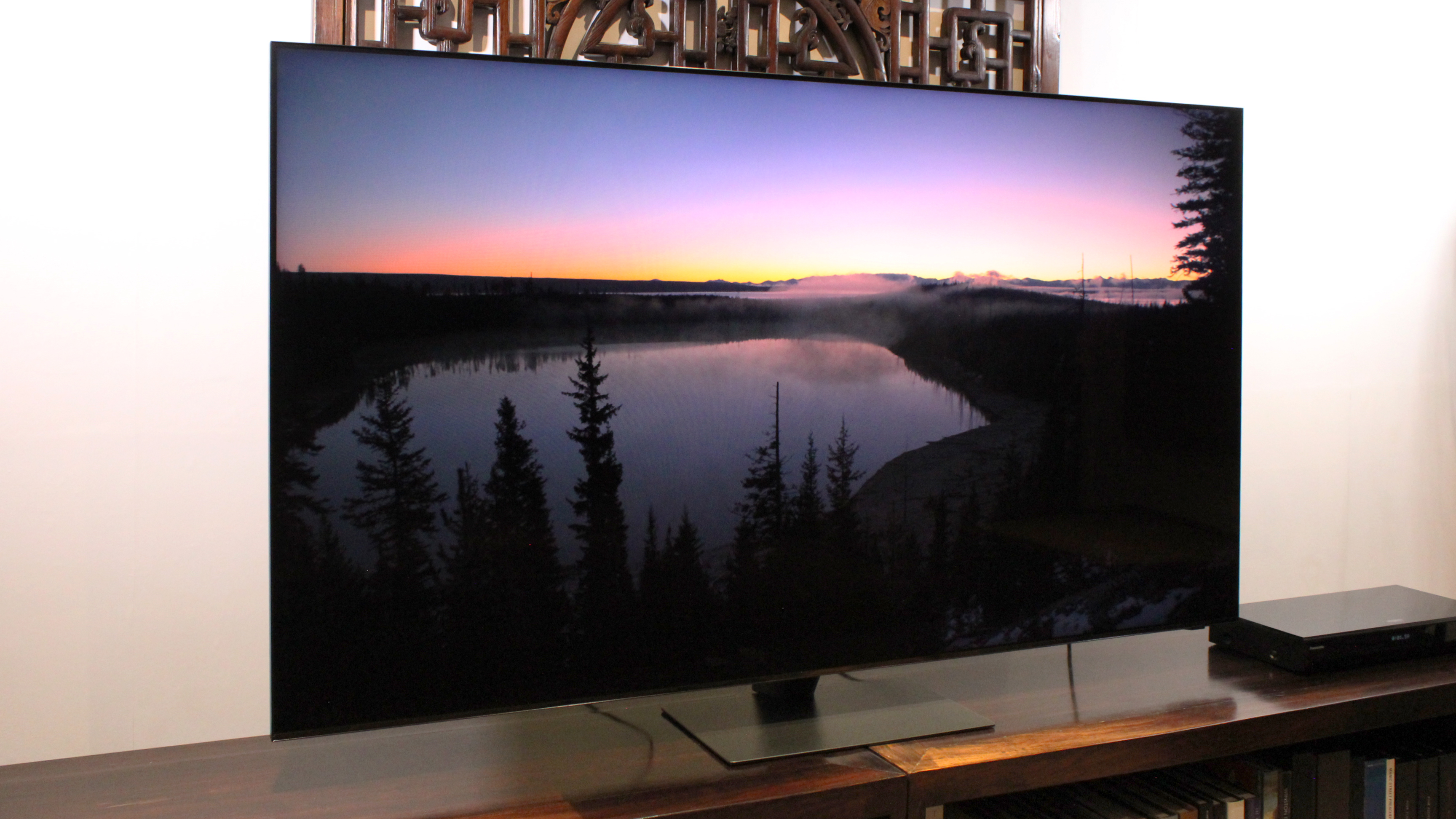 Your Samsung TV just got its biggest free upgrade yet
Your Samsung TV just got its biggest free upgrade yetOne UI is rolling out to the latest Samsung TVs now
By Britta O'Boyle
-
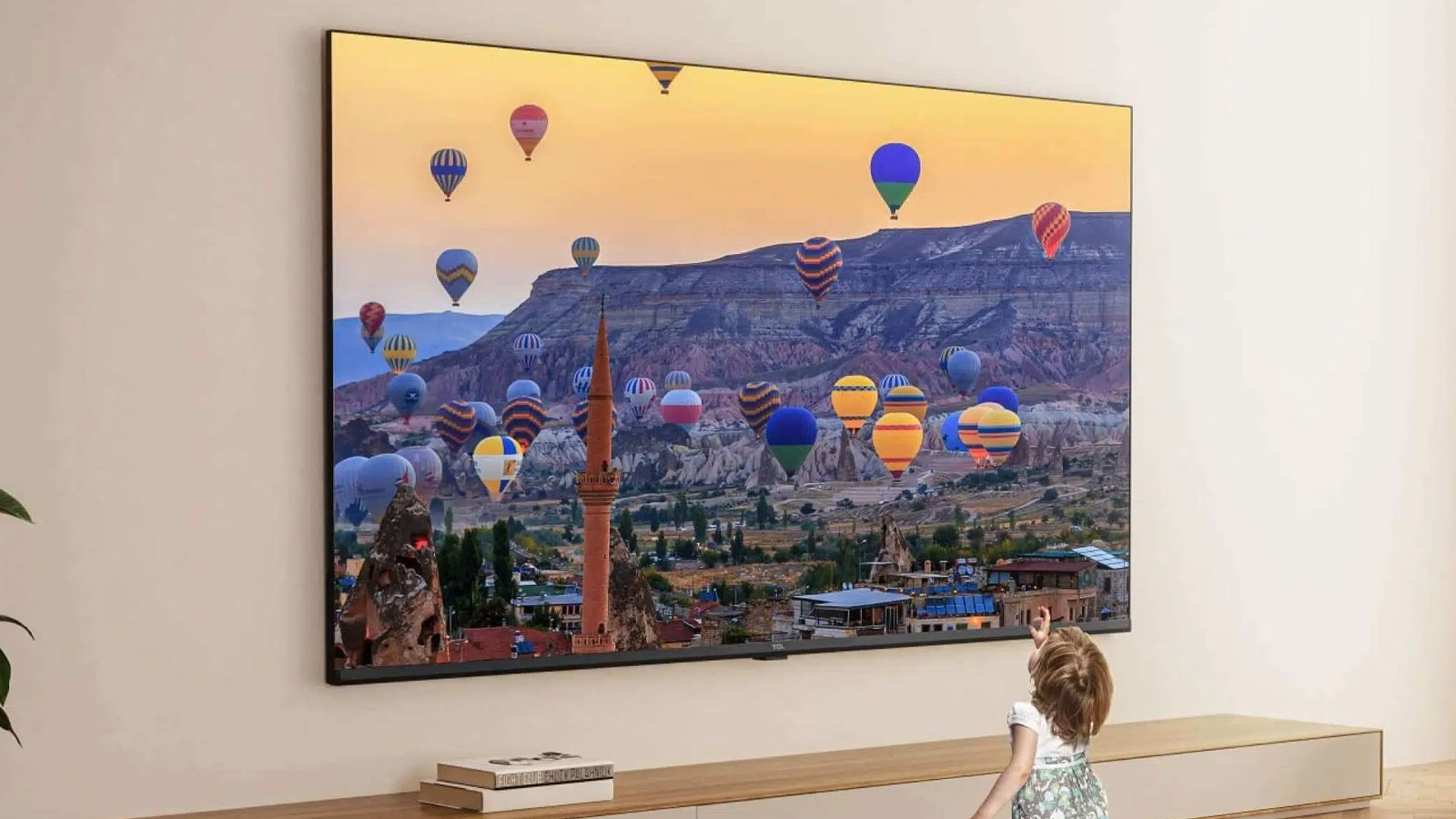 This ultra-bright mini-LED TV is the display of my dreams
This ultra-bright mini-LED TV is the display of my dreamsTCL's next flagship looks fantastic
By Andy Sansom
-
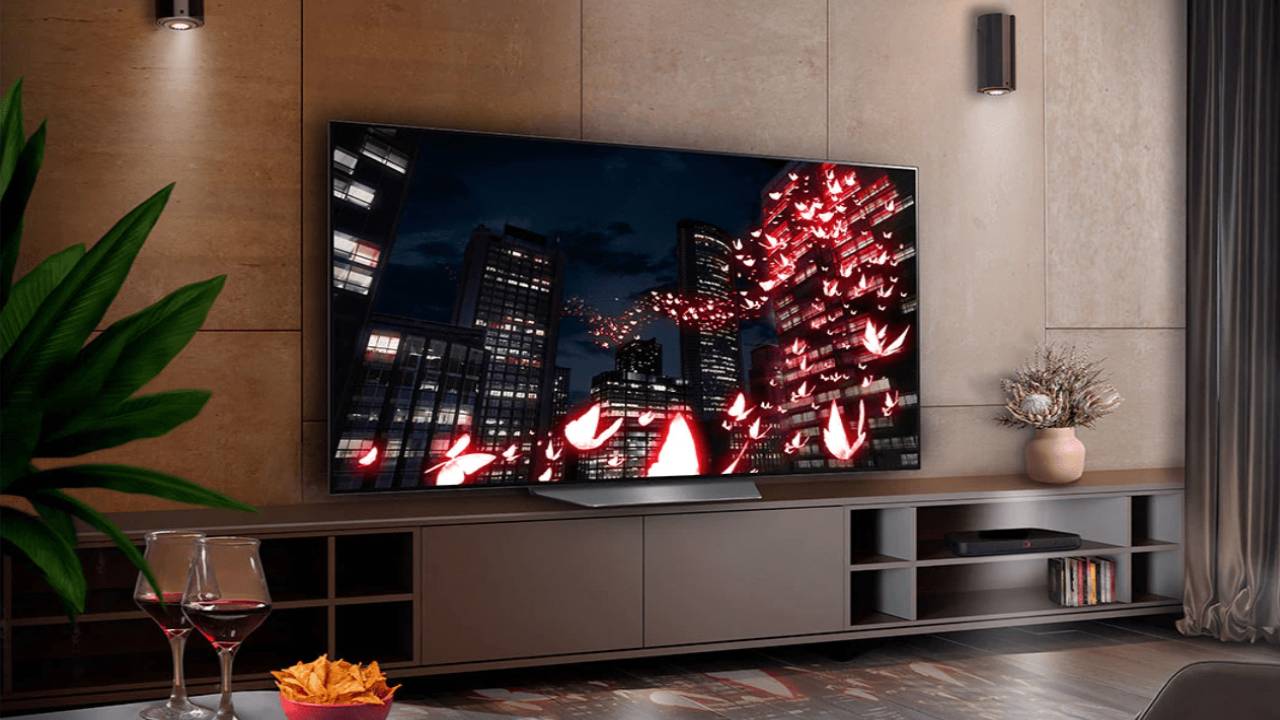 LG TV owners just got Apple TV+ for free
LG TV owners just got Apple TV+ for freeNo matter if you have an LG OLED TV or an LED model, you just got Apple TV+ for free
By Robert Jones
-
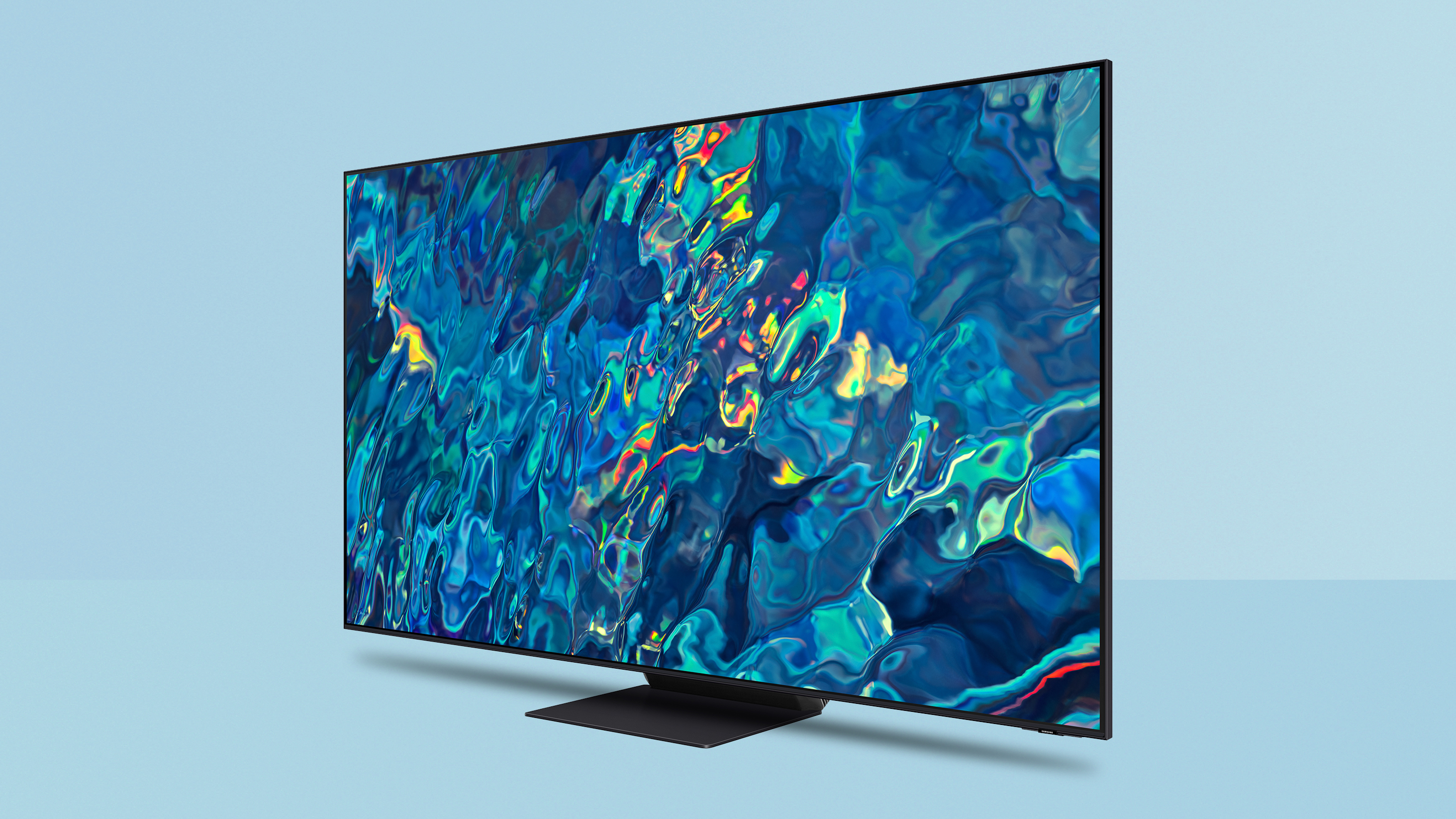 Samsung smart TV owners just got a welcome image upgrade
Samsung smart TV owners just got a welcome image upgradeHDR10+ comes to the Apple TV app on Samsung Smart TVs
By Carrie Marshall
-
 My LG C1 OLED TV makes The Darkness look incredible on Xbox Series X
My LG C1 OLED TV makes The Darkness look incredible on Xbox Series XThis classic first-person shooter is taken to a new level of awesome thanks to OLED TV tech
By Robert Jones
-
 TV deals in the Amazon Prime Early Access Sale from Samsung, LG and more
TV deals in the Amazon Prime Early Access Sale from Samsung, LG and moreBlack Friday deals have come early with these TV deals as part of Amazon's Prime Early Access Sale
By Mat Gallagher

